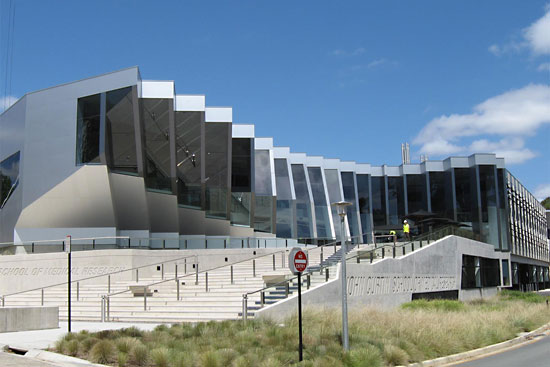ANU: Game-changing holographic tech focus of ANU research centre
A ground-breaking research centre focused on optical technologies, which could create lifelike moving holograms that display straight from your phone screen, is being officially launched at The Australian National University (ANU).
The ARC Centre of Excellence for Transformative Meta-Optical Systems (TMOS) brings together some of the greatest minds from five Australian universities with 20 partner organisations into a research consortium that aims to change the way we use light.
Along with holographic phone screens, the futuristic technology could also make self-driving vehicles an everyday reality and allow doctors to receive real-time images from inside patients at a cellular level.
“The lens-based optics that are used in modern-day devices are based on concepts of light that are 3000 years old,” TMOS Director and Professor in Physics at ANU Dragomir Neshev said.
“That’s why your phone is as thick as it is – traditional lenses have to be a certain width in order to work. What we’re developing are optical surfaces that replace big lenses. That’s a gamechanger for almost every industry.”
Minister for Industry and Science Ed Husic said: “Australia’s future prosperity and wellbeing relies on undertaking the fundamental research required to transform the industries of the future. Integrating and advancing our knowledge of light and its interaction with materials at the nanoscale is a tremendously exciting new field.
“I’m keen to see how the new ARC Centre TMOS will deepen our knowledge of this growing area of science pioneered in Australia that promises to have significant impact on our future way of life.”
The CEO of the Australian Research Council (ARC) Judith Zielke who is speaking at the launch event noted the value of ARC Centres.
“ARC Centres of Excellence are focal points of expertise, through which high calibre researchers collaborate to deepen and deliver research in areas of national priority, strengthen Australia’s international standing, and have a strong impact on the quality of life enjoyed by Australians,” Ms Zielke said.
“The research conducted by TMOS will enhance the quality of life for everyday Australians, and strengthen Australia’s research capacity.
“I am looking forward to seeing the real-life research outcomes of the ARC Centre of Excellence over the coming years and the amazing researchers that will be continuing to innovate for Australia as a result of their training and the work with industry partners.”
Professor Neshev said: “The ongoing funding for this project means that Australia can become the ‘go-to’ location for cutting edge research and development of miniaturised meta-optics that can enable us to see the invisible.
“Australia has the talent, infrastructure and community support that makes it an ideal place for innovation, and we’re excited to be part of this next step towards new technologies that will fundamentally shift the way many industries operate.”
TMOS researchers come from The Australian National University, University of Technology Sydney, RMIT University, University of Melbourne and the University of Western Australia. It has 20 national and international partners.
The centre was awarded $34.9 million over seven years by the ARC.

